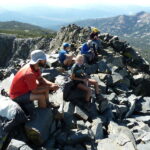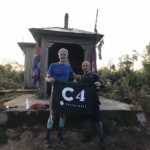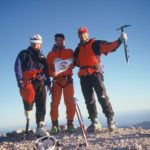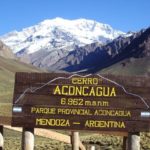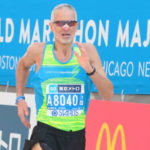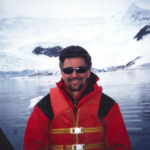

Trip Report #3 2014 PYONGYANG MARATHON
TRIP REPORT #3
2014 PYONGYANG MARATHON
In 2014, I came across an article on RunnersWorld.com dated January 22nd. The headline was “North Korea Marathon Open to Everyday Runners for First Time.” I was intrigued. I had already run at least one marathon on each of the seven continents, and I was set to run my 6th of the Abbot World Marathon Majors (Tokyo) the following month. I had already been thinking about what my next running challenge or goal was going to be. Plus, I’m a collector of countries, always looking for somewhere new to go. I had been trying to figure out how to visit North Korea safely and legally for some time.
That night, I casually mentioned to my wife, Deb, that I wanted to go run a marathon in North Korea in three months’ time. She was not enthusiastic. I was not deterred. I got online and started researching Koryo Tours, a Beijing-based company mentioned in the Runner’s World article. They looked safe and experienced, and they had a package listed that was specifically designed for runners and spectators of the 27th Mangyondae Prize Marathon—commonly known as the Pyongyang Marathon. I printed out the itinerary and presented it to Deb. At this point, she was a little more open to the idea. I told her that the tour company was based in Beijing, and that we could spend a few days on either side of the trip there. Deb loves Beijing. We were in.
Deb and I both ran the Tokyo Marathon in February 2014. Deb thought it was insane to run two marathons two months apart, so she opted for the option of the Half Marathon in Pyongyang. If I was going to race in North Korea, I was going to go big or go home; nothing but 42K for me. In Tokyo I ran a 2:40, finishing second in my age group (M50-54 at the time). My training leading up to Tokyo had me running an average of 142 miles per week, running long runs on Sundays averaging between 20 and 26 miles. After Tokyo, I kept up my training, running an average of 115 miles per week, and my long Sunday runs were a little shorter, averaging between 16 and 20 miles. We decided to run the San Francisco Rock ‘N’ Roll Half Marathon the Sunday before the Pyongyang Marathon (April 6th), where I won my age group with a 1:20 and Deb placed 3rd in her age group (W45-49).
We traveled to Beijing, where we did some sightseeing and ate some Peking duck. We met with our tour leaders at Koryo Tours on an orientation with the other tour participants. We were briefed on politics and protocol for the visit to North Korea, but there wasn’t a lot of information about the race itself. We flew to Pyongyang the next day on Air Koryo. Fun fact: Air Koryo is rated as the worst airline in the world; it’s the only airline with a one-star rating from SkyTrax. Nevertheless, our arrival was smooth & uneventful.
We were taken to the Yanggakob International Hotel, a 47-story Communist-style building on an island in the Taedong River. Hotel guests are not permitted to leave the island, which is not large by any stretch of the imagination. It consists of the hotel and its parking lot, and that’s it. If we wanted to run, our only option was to run in circles around the parking lot. Once again, the parking lot was not large. No treadmills inside the building. No shakeout runs after our flight, no runs to loosen up before the race, no runs to recover from the race. No runs allowed, except the marathon. The hotel rooms were functional, but not comfortable. We were told that the elevators were probably bugged, and that some rooms might be as well. We were told that there were cameras everywhere.
The first days of our trip were spent doing some obligatory North Korean sightseeing on the Tourist Circuit. We took the Metro tour and went to various statues, parks, and monuments, where we were instructed in how to stand in (very) straight lines and bow to the Dear Leaders in the appropriate manner while flowers were placed at the base of huge statues. For posterity, we were videotaped constantly—and we were told that at the end of trip, we would be able to purchase a souvenir DVD.
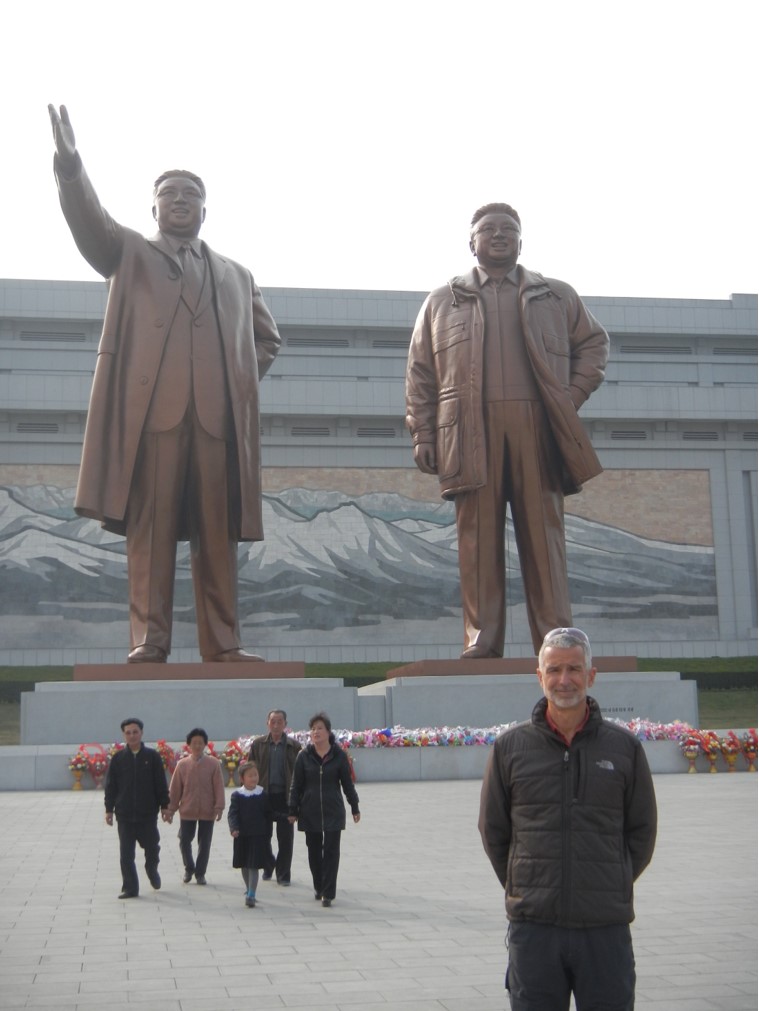
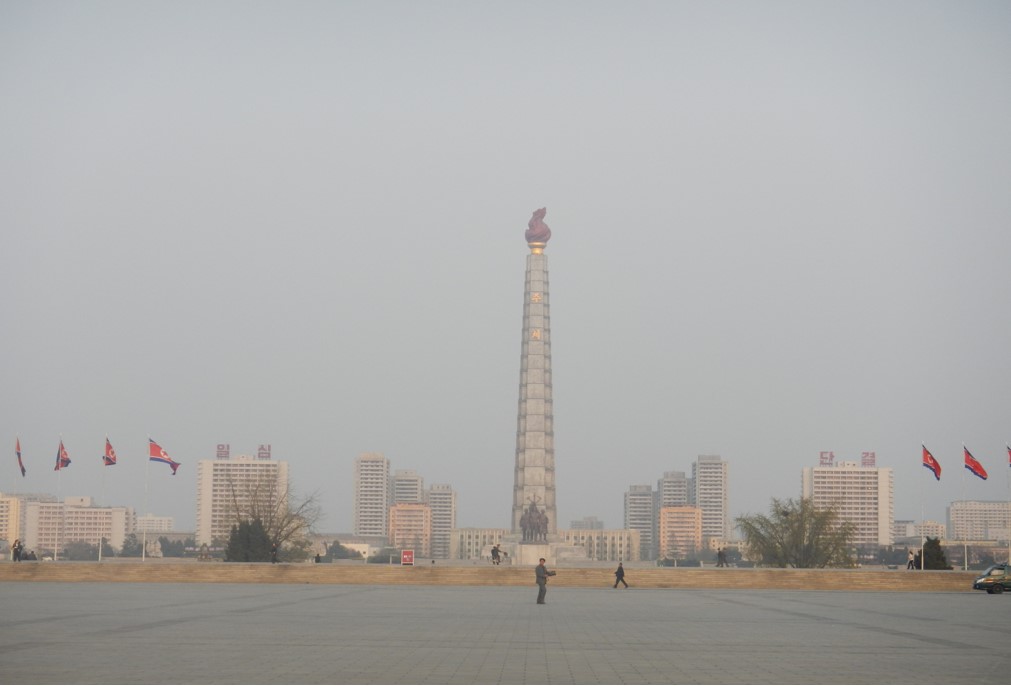
The day before the race, we took a detour from the prescribed tourist agenda, and did a little pre-race prep. We were given a Xeroxed copy of a hand-drawn course map. The bus driver was going to take us on a drive-through of the course, since we weren’t allowed to run it. The map didn’t make a lot of sense to the bus driver, and our government-issued tour guides were not really informed about the logistics of the race. We did the best we could, but no one could really help us with the math of the race.
The course was essentially a 10K, starting in the Kim Il-Sung Stadium, and finishing on the street just outside. We were told that the half-marathoners would run two laps of the 10K course and that the marathoners would run four. The problem, of course, is that two ten-kilometer laps don’t make a complete half, and four of them don’t make a complete marathon. No one could tell us where the extra distance was coming from. We drove some of the course in the bus, but there were still some surprises on race day! We were taken to the stadium, where we posed for pictures with the sign outside advertising the race.
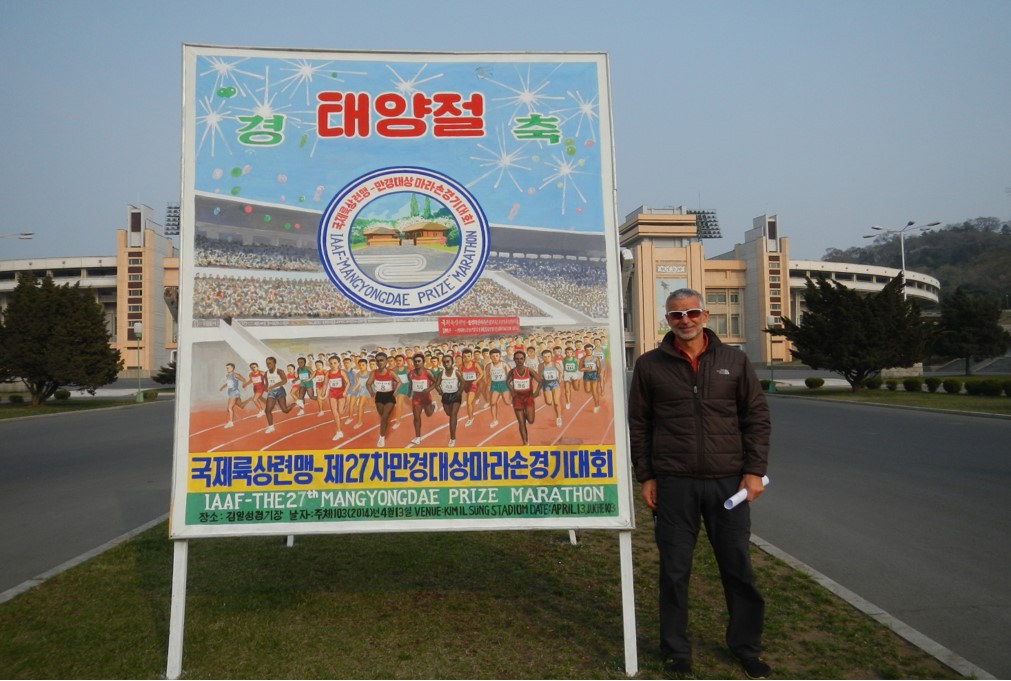
That day, the air quality took a turn for the worse. Visibility was terrible, and we could only see a block or two into the distance. I’ve been to a lot of cities in Asia where people wore masks even though the air quality seemed okay to me, but in Pyongyang, I found the exact opposite. The air quality was horrible (due to a coal mine close by?) and no one was wearing a mask. When we asked about this, we were told that the government’s stance is that if people are not wearing masks, there obviously isn’t a problem with the air quality.
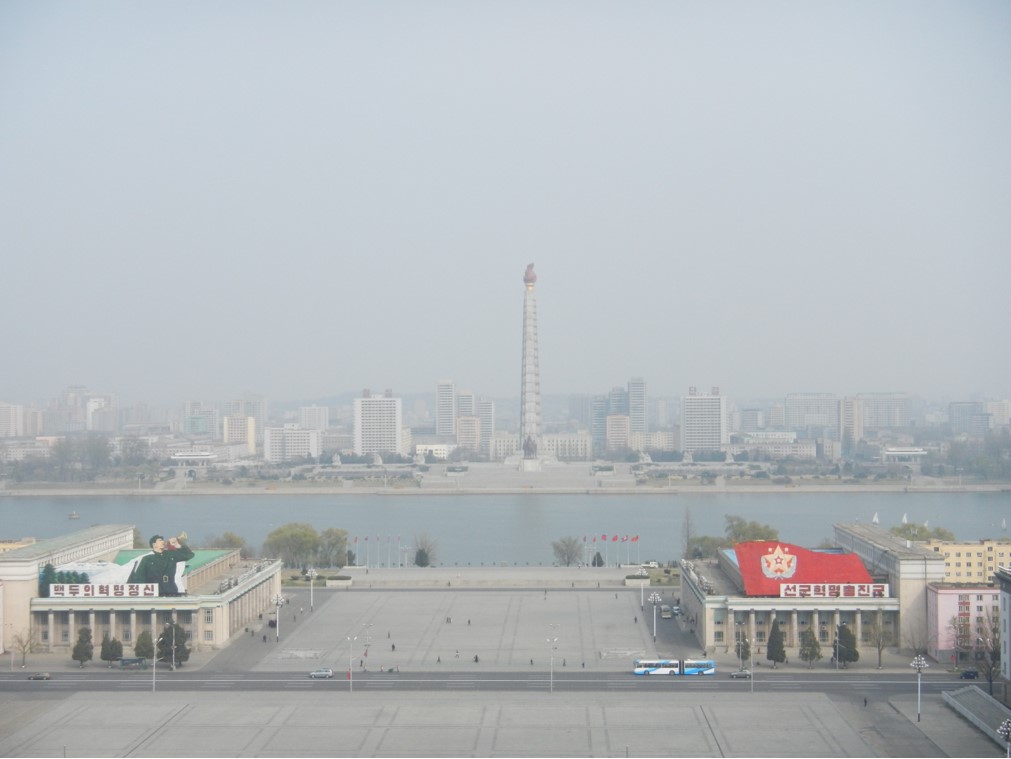
I am generally not a finicky eater, but I think most runners tend to lean toward a certain type of meal the night before a race, particularly before a marathon. At our hotel, we were fed banquet style. Our pre-race meal was fried fish and the ubiquitous kimchi (offered daily at breakfast, lunch, and dinner), with a few other side dishes. It was far from an ideal pre-marathon meal. Deb and I ended up eating a few Clif Bars in the room before we went to bed.
We had Clif Bars for breakfast race morning as well, and after I grabbed some coffee from the restaurant, our bus took us to the stadium. April 13, 2014: race day! The morning was chilly, and we arrived at the stadium in our warmups, wearing our race credentials around our necks and feeling like running rock stars. We had been told repeatedly that, as “amateurs”, we were not allowed to represent our countries with flags, country names, or any other logos on our clothing before, during, or immediately after the race. We were also told that the size of any branded logos (like a Nike swoosh) would be strictly regulated. After the race, we heard about one guy who was told that the logo on his shorts was too big, so he ran in his jeans. I don’t know what distance he was running, but for his sake, I hope it was only 10K!
There was a grand procession into the stadium to begin the opening ceremonies. We lined up in the parking lot in three groups of international amateur runners, totaling about 225 people. We were not allowed to carry anything: no cameras, no water bottles, no bags. Before we entered the stadium, the professional runners marched in, one country at a time. There were eight countries from Asia and Africa, with one or two runners each, followed by a North Korean contingent of around 60 (male and female). We followed the professionals in and lined up (in very straight lines) on the field to stand through the opening ceremonies, which consisted of speeches (in Korean) and music, all enthusiastically received by the 50,000 spectators. It was a sight to behold. The cheering was so loud, and so persistent, that even though it felt staged, it was hard not to respond with a smile and a wave.
After the opening ceremonies, we filed back out of the stadium (still in those very straight lines) and went towards our bus, where someone was waiting for us with large plastic bags. We quickly deposited our warmup gear in the bags and went back to the stadium to get into position for the start of the race. The professionals, all of whom were running the marathon instead of the shorter races, lined up in front, on the track, with everyone else lining up wherever they wanted to. There was no seeding or structure whatsoever to the start line for the amateur runners. In addition to the people who had been on the field for the opening ceremonies, several hundred amateur North Korean runners appeared, ranging in age from what looked like ten-year-olds to men in their seventies.
Looking around, I noticed that the pricey, high-tech running gear worn by the international runners, both amateurs and the professionals, was very different than the older, baggy singlets and loose, old-school 1970s-era race shorts worn by the North Korean men and women. Their shoes were very worn, and many of them were not even what most in America would consider “running” shoes.
The gun went off. Everyone bolted. The gun went off again. False start. In a marathon? That seemed odd to me, but we all shuffled back into place.
After everyone was in position, the gun went off again, and we were on our way. About 100 meters down the track from the start, there was a 90 degree turn off the track and into a tunnel, going out of the stadium. The race slowed to a crawl until we were out of the tunnel. The kids, and many of the other DPRK amateurs went out hard and fast. I have never seen that many people start a race of that distance—or even a 10K—with that level of intensity. As I passed many of them on the first lap, their breathing and their faces told me that they were redlining, running at their maximum capacity. It’s hard not to wonder what the results of this race might mean to them, for better or for worse.

The course itself was not very exciting. We passed the Arch of Triumph and the May Day Stadium, and there were some spectators around the 10K mat. Interestingly, despite the specific directions we had been given about flags and country names, I saw a few runners (from Norway, Ukraine, Great Britain and Germany, to name a few) who were definitely representing their countries. After the race, I found out that the flag rule only applied to American and Japanese runners.
The air quality during the race was awful. I felt a burning in my throat and had a horrible taste in the back of my mouth the whole time. By the start of the race, I still hadn’t figured out how we were going to get 42K out of running at 10K loop 4 times. I was running a good pace and was able to stay with the some of the leading women, who were all North Korean athletes. When in doubt, I always follow the locals. I followed the North Korean women and easily found the extra out-and-back stretch that was added to the course after finishing the 4th 10K and before turning down the course into the stadium to finish on the track.
Deb, running the half, got to the stadium before me. When she ran in, there was no one in front of her, so when she saw the timing table, she though she was done, but she had a lap around the track to run. Coming up to the timing mat for the second time, she wondered why they were holding a tape across the track. She thought the first place marathoner must be coming up behind her, but the tape was for her. She had won the women’s half! She had never broken a tape before.
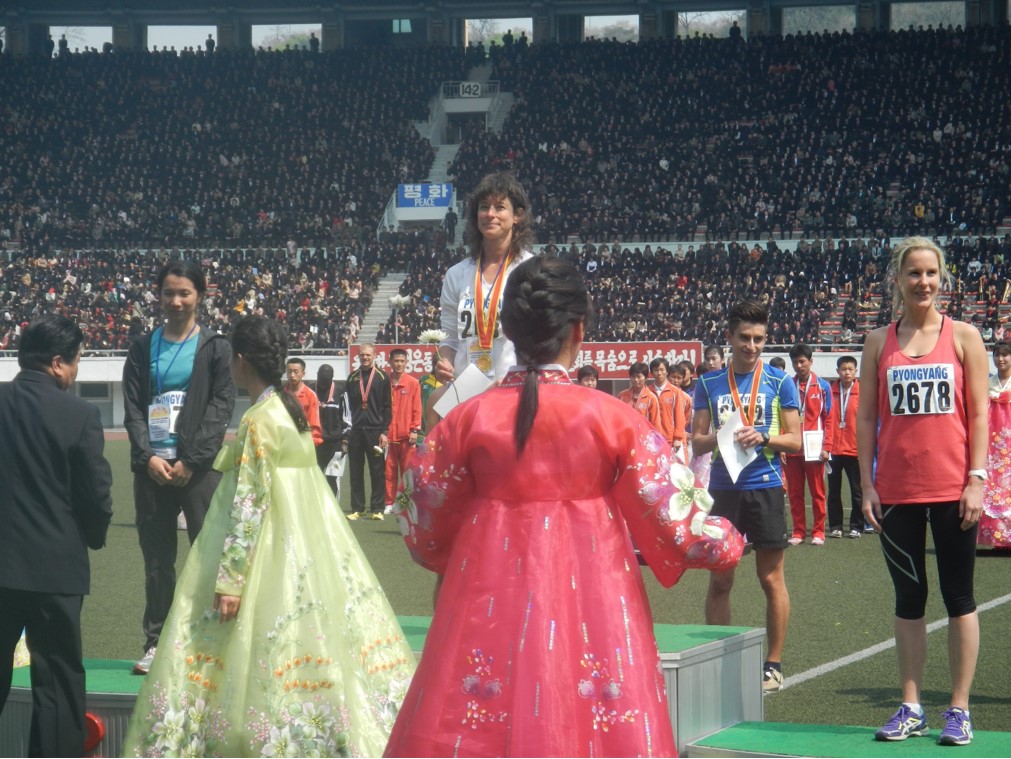
When I entered the stadium, finishing with a 2:50, they weren’t even ready for me! Sadly, this meant I didn’t get to break a tape the way Deb did. I was the only international amateur to break 3 hours.

The race official at the finish came over to me and asked me, “You are not in the marathon?” even though my bib number indicated that I was.
I said, “Yes, I am.” She replied, “But you didn’t run 4 laps!” I said “Yes, I did.” She asked “Did you do the out and back before you came to the stadium?” Again, I said “Yes, I did.” She acted like she didn’t believe me. I was hot. I was tired. I was thirsty. Finally, I said “Hey, I ran right behind the top women and followed them every step of the way. We’ve got chips on and there are mats, so you can check it.” A few minutes later, she came over and verified my win.
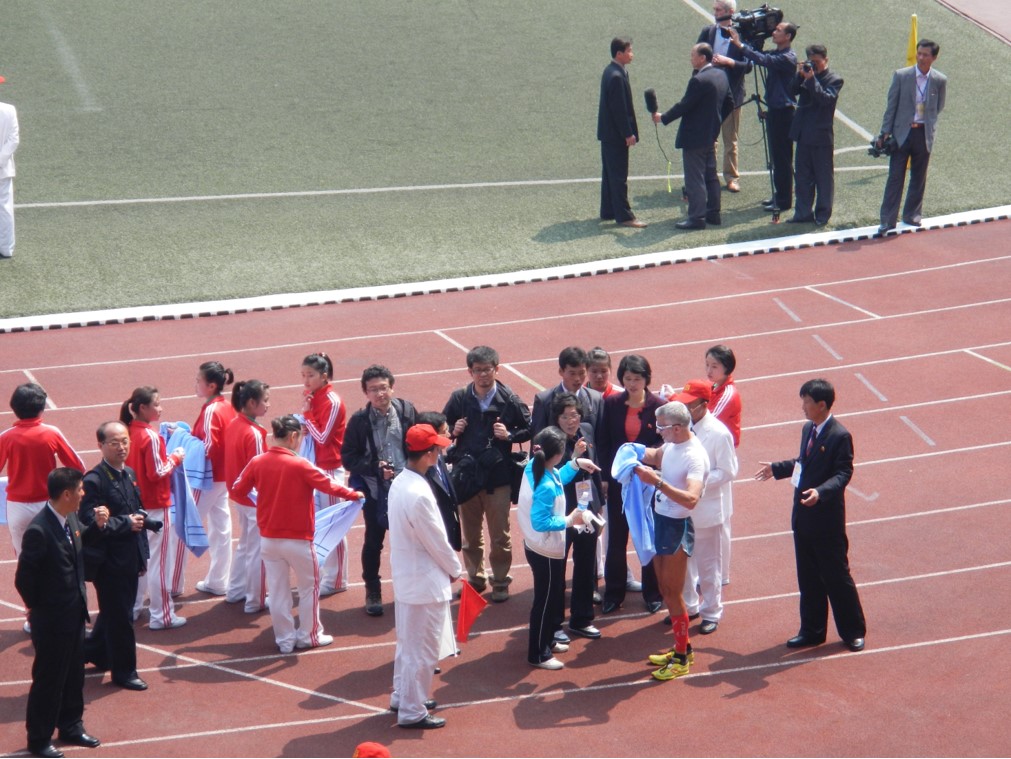
After the race, we went to get our stuff out of the plastic bags & the buses & changed into dry clothes. We had to wait around more than two hours with no food and a limited amount of water for the awards ceremony. Because it was North Korea, we couldn’t go anywhere; we just had to wait. While we were waiting, I got interviewed by an international news station, and the interview showed up online, so a lot of people back home got to see it.
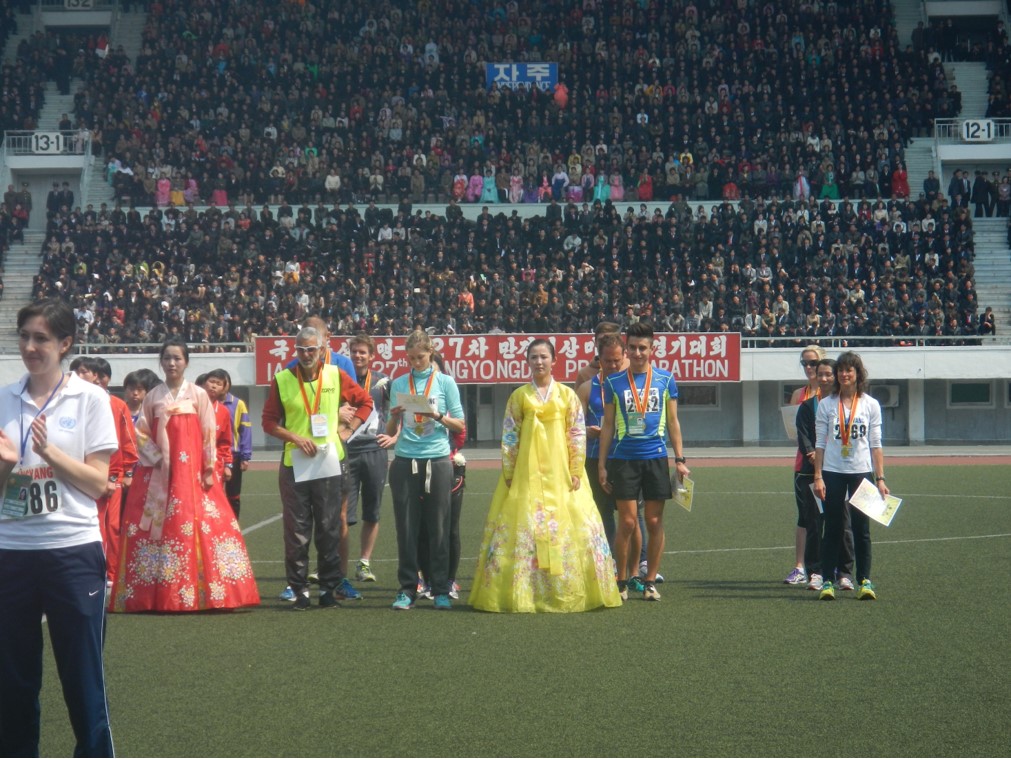
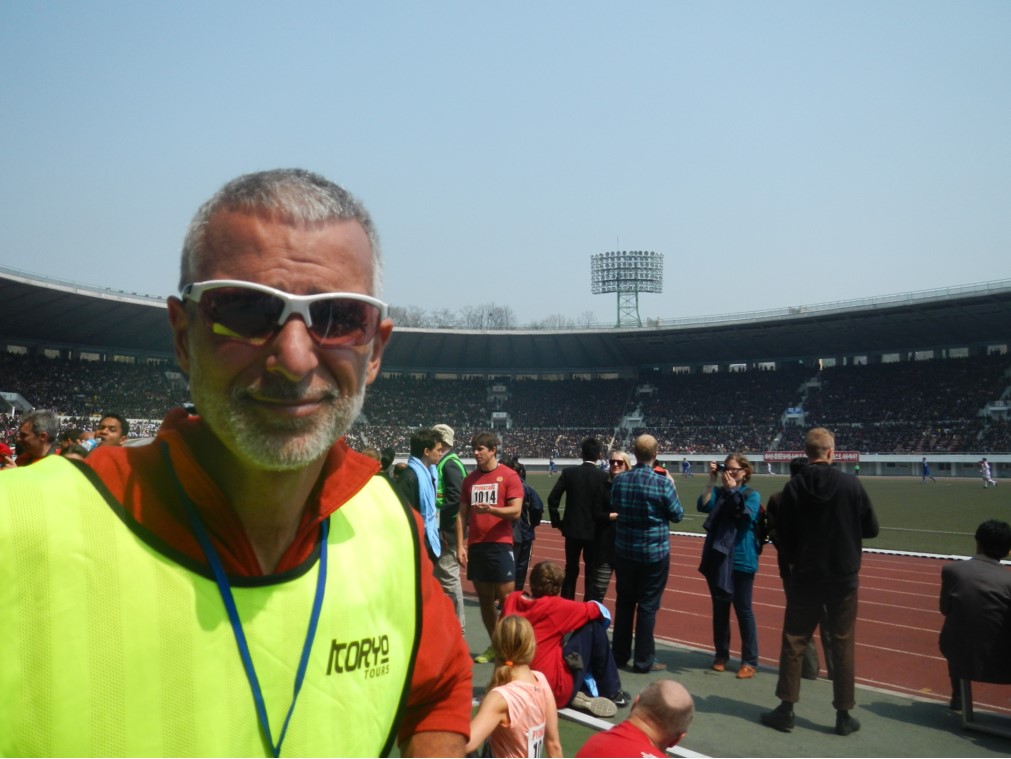
Receiving a medal for winning a marathon in front of 50,000 cheering people is pretty cool. The race organizers lined us up on the field (in—you guessed it!—very straight lines) by gender and race distance, and we took turns standing up on huge 1st, 2nd, 3rd place podiums, being handed certificates & a flower, and bending over to have medals put around our necks. It was like the Olympics. Unlike the Olympics, they did not raise the American flag, or play the national anthem for me or for Deb. When we got back on our bus after the award ceremony, the Koryo Tours guy was pretty happy to have gold medalists on our bus. He actually had three of us, because the winner of the Women’s 10K was also in our group.
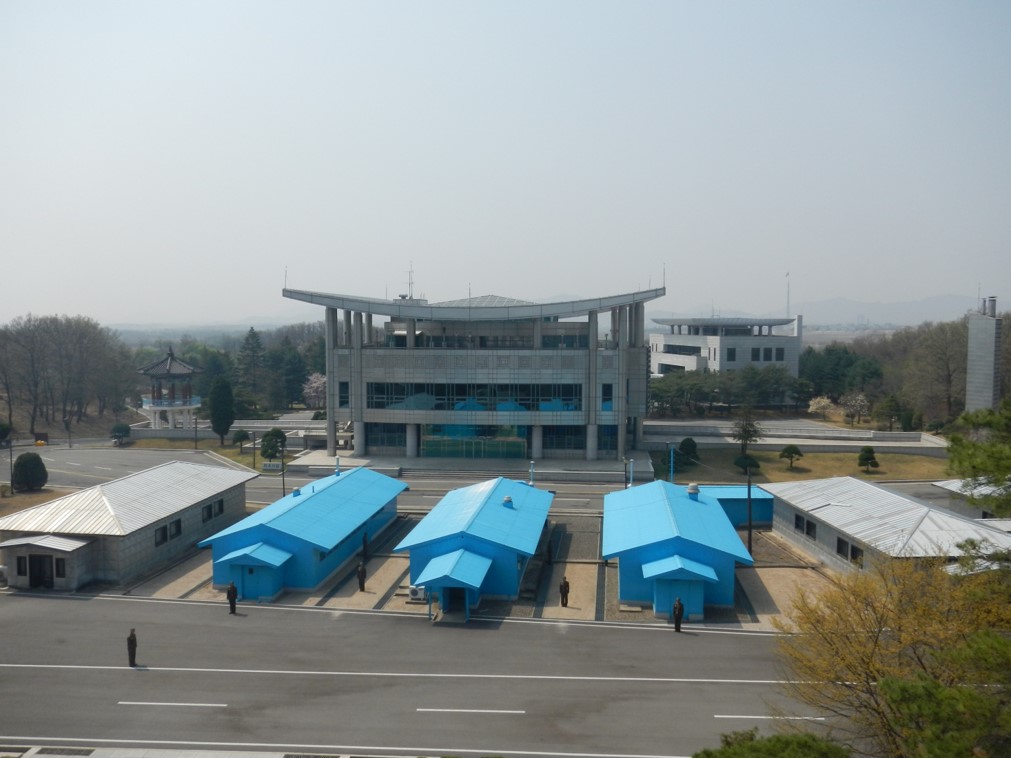
We had a couple more days of sightseeing, but no more running, before we left. More monuments, more statues, more museums (including the “Victorious Fatherland Liberation Museum”, celebrating the “defeat of the US Imperialists”) and a trip to the DMZ (where the rhetoric includes how the “American Imperialists were afraid”.) I had always thought that when I went to the DMZ I would be on the south side; it was strange looking across to the south. It just didn’t match up with all the images I had seen on the news and in documentaries. We visited the mausoleum where Kim Il-Sung and Kim Jung-Il are viewed. All of these excursions were constantly videotaped.

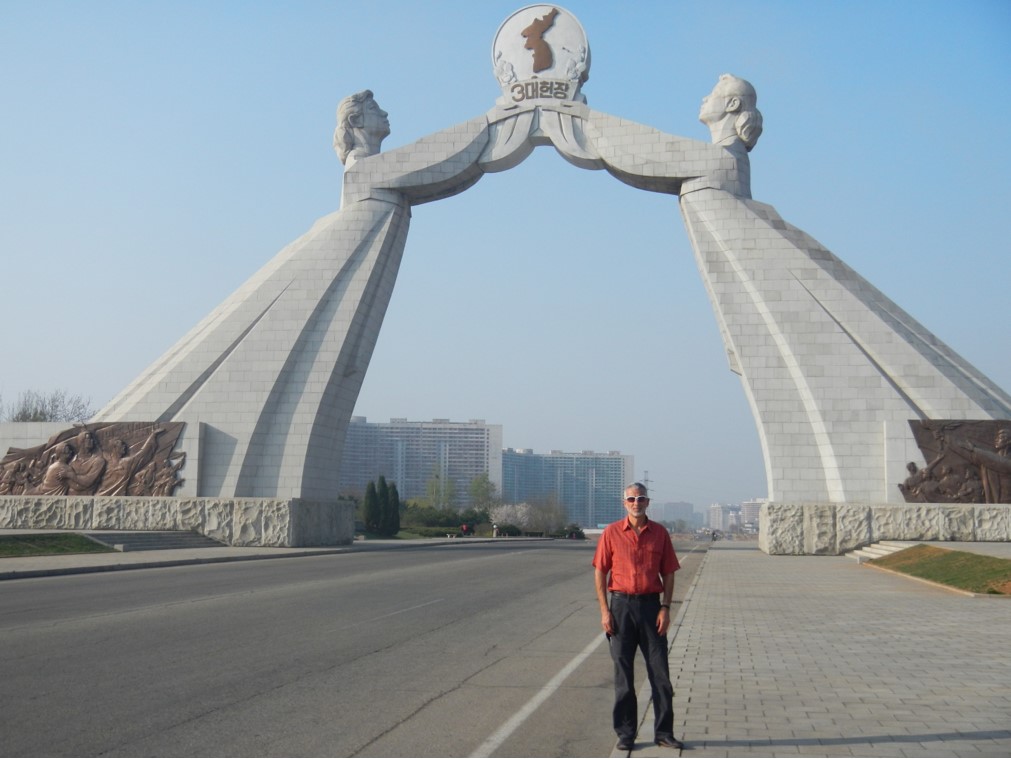

There is an overwhelmingly oppressive, totalitarian feel to every aspect of traveling in North Korea. To visit the Democratic People’s Republic of Korea is to travel to a time and place where Communism is in full force and all of its propaganda is inescapable and on full display everywhere: on posters and billboards, in statues and monuments, and broadcast over loudspeakers. If the opportunity to experience this is as intriguing to you as it was for me, I highly recommend Koryo Tours. They are a first-class operation.
While we were outside the hotel, the food was quite good, and we were treated with nothing but courtesy, but there was still a strange feel to the entire trip. All of the people we met seemed nice enough, but they also seemed meek, and afraid to truly engage with us. The most challenging part of the trip was not anything logistical or political. It was temporarily losing my freedom. Being told I could not go for a run, could not leave the hotel, could not get a snack while waiting around for the awards ceremony, could not take a photograph without approval, could not eat or shop anywhere that I wasn’t taken as part of the government approved tour itinerary, were all examples of this. There is nothing scary about visiting North Korea. Nothing ever felt dangerous or unsafe. However, if you go, listen to the rules laid out by your tour operator, and follow them. There are too many examples in the news of people who don’t, resulting in a much more permanent loss of their freedom.
It would be interesting to visit again after a Korean re-unification (or after a regime change) and see how the country and its people would be different. I don’t know that I’d run this race again, but maybe someday I’ll go back to climb Mt. Paektu, the highest point of both North and South Korea! Might be a future Trip Report! Who’s in?
